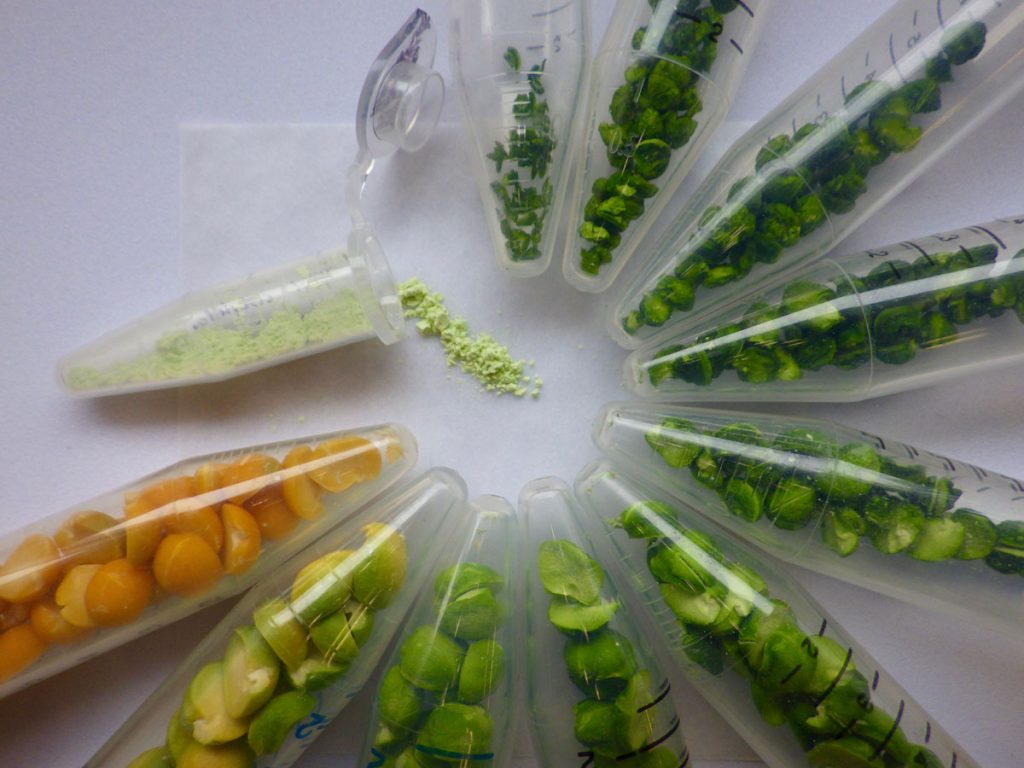| Submitted by: | Johannes Giebelhaus |
| Collaborators: | Jocelyn Ozga |
| Dennis Reinecke | |
| Department: | Agricultural Food & Nutritional Science |
| Faculty: | Agricultural Life & Environmental Sciences |
Pea seed development works like a clock: as time passes, seed size increases like the numbers of each passing hour. Seeds increase in size over development due to the expansion of cotyledons, the seed’s storage organs. The cotyledons swell as cells expand to accommodate the accumulation of storage compounds such as starch and protein during development. Cell expansion is partly caused by the plant hormone gibberellin; however, it is unknown if gibberellin also affects the timeline of protein accumulation in developing seeds. Current research is addressing this question by comparing pea cotyledons that differ in the amount of gibberellin they contain over development, as depicted in the clockwise arrangement of cotyledon samples. After harvesting, cotyledons are ground to a fine powder, enabling the protein that has accumulated during development to be extracted for analysis. Pea protein is used as an ingredient to create plant-based food products, so research into the effects of gibberellin on protein production in developing pea seeds could be used to improve the protein content of conventional field pea varieties to fuel this growing industry.

